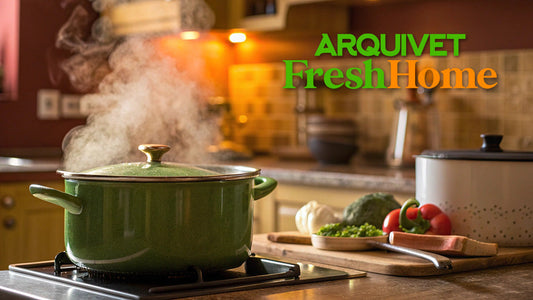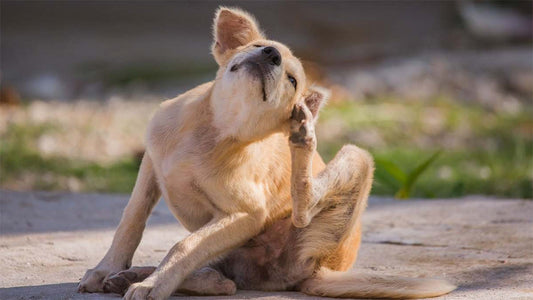
Dogs don't like hugs.
Imagine you see your dog, you give him a big, loving hug… but behind that furry face, there's a thought: what's going on here? At first, it might seem like a contradiction; you love him and hug him with affection, but your dog's body language could be saying something very different. Why don't dogs like hugs? Let's uncover the answer, step by step, from the perspective of an animal lover and some studies by canine behavior experts.
What goes on in a dog's mind when we hug them?
Is the hug for them… or for us?
When we think of “hugging your dog,” we see it as a sign of affection. But for many dogs (and in fact, for “most,” according to several studies), that gesture can be uncomfortable, confusing, or even stressful. Recent research shows that dogs interpret hugs differently than we imagine.
For example, in a study analyzed by Stanley Coren, 250 photographs of humans hugging dogs were reviewed, and it was observed that approximately 81% of those dogs showed signs of stress. More recently, another study analyzed videos and found that many dogs avoided eye contact, drooled, flattened their ears, turned away, or even tried to “bite” when being hugged.
So, while for us “hugging” means affection, for many dogs it can mean something quite different.
Why Do They Feel This Way? The Canine Perspective
There are several reasons, both ecological and behavioral, that explain why dogs don't like hugs:
- Dogs, as a species, are designed to move freely. They are what are called "cursory animals" (animals that run). This means that when they feel threatened, their first instinct is usually to flee.
- A hug immobilizes the dog, brings it very close, and puts it in a position that many dogs didn't "see coming" as part of their body language. This "tough approach" can be interpreted as restriction or a threat.
- Furthermore, human and canine body language and social communication are not the same. What for us is a "great gesture of affection" may be something that doesn't fit into a dog's "catalog of well-being signals."
That's why we arrive at this somewhat unexpected conclusion: dogs don't like hugs—not always, and not in the way we think.
What do scientific studies show about dog hugs?
Key facts that will make you think
- In a review of photos and videos, it was observed that approximately 82% of dogs showed at least one sign of stress when hugged.
- In popular videos studied: 68% of dogs turned away or avoided eye contact, 44% licked their lips, 60% flattened their ears, 81% twitched their eyes or blinked excessively, and 43% snorted or panted. A further 67% even attempted to bite or gently nipped.
- Experts point out that many owners misinterpret their dogs' gestures: for example, a dog that is "still" doesn't necessarily mean "happy"... it could be frozen with stress.
So the study says NO dogs enjoy hugs?
Not exactly. The fact that “most” dogs show signs of stress doesn't mean they all hate hugs. Some dogs seem to tolerate or even enjoy them. But studies warn that most do find them uncomfortable, and that humans often misinterpret these signals.
In other words, even if your dog seems calm when you hug them, they might be suppressing their discomfort. And it's important to understand that not all affectionate gestures, interpreted as humans do, are comfortable for dogs.

How can you tell if a dog doesn't like being hugged?
When you hug your dog and observe their body language, there are several signs that you might be emotionally smothering them, even if you're doing it with lots of love.
Signs of Stress and Dislike
Some clear signs:
- The dog looks away, turns its head to the side, or avoids direct eye contact.
- Ears lowered, pressed against the side of the head.
- Lips licking or stretching.
- Dilated pupils, or what is called "half-moon eye" or "whale eye" (the whites of the eyes are visible).
- Slight panting or a quiet growl.
- Body rigidity, remaining motionless, as if "frozen."
- In the most extreme cases: attempting to bite or escape.
Why is it important to recognize these signs?
Because thinking "my dog enjoys my hug" when in reality he's uncomfortable can lead to problems: anxiety, loss of trust, and even defensive bites. It's important to educate both children and adults about what it means to "approach" a dog properly.
If hugging your dog isn't ideal… what can you do?
Now for the good part: how can you show your dog affection without hugging them and without making them feel invaded? You can show love in many ways without resorting to the human gesture of a hug.
Alternatives to a dog hug
- Gentle strokes in their comfort zone: behind the ears, on their back. Avoid holding them tightly.
- Kind words and a calm tone of voice: dogs understand your affection through your voice as well.
- Quality time together: play, go for walks, invite them to play. This strengthens the bond.
- Attention rewards: a healthy treat, a new toy, a brushing session.
- Give them space: allow the dog to approach if they want. If your dog comes to you for a pet, great. But don't stop them if they want to move away.
Why these methods work best
Because they respect canine language: you let them move, you communicate on their terms, you don't immobilize them. This way, you prevent them from feeling trapped. Studies show that allowing a dog to exercise their natural "escape" instinct, or at least not preventing it, reduces stress.
How to show affection without being intrusive
- Invite the dog, instead of holding him—for example, open your arms or get down on the ground, and wait for him to come to you.
- Observe his body language: if he turns his head away, seems tense, licks his lips… stop.
- During petting, change areas of your home, vary the intensity, always respecting his reaction.
- Use products that encourage bonding (toys, mats, treats) instead of promoting forced cuddles.
The Contradiction Many Owners Face
You hug your dog because you love him, but perhaps he feels the opposite at that moment. This contradiction is the key to the article: what seems like human affection may not feel that way from a canine perspective.
The phrase “dogs don’t like hugs” sounds harsh, but it’s backed up by recent science. And understanding this doesn’t mean you don’t love your dog; it means you love him so much that you want him to be comfortable, happy, and stress-free. Showing affection isn’t the same as hugging.
So, when you lean in to hug your dog, think: “Am I doing this for him or for me?” And perhaps he’d prefer a gentle stroke, a new toy, or a “Shall we go to the park?” instead of that big hug.
At the end of the day, your dog values transparency, comfort, freedom, and affection more than a big human embrace, so the next time you think, “I’m going to hug my dog,” remember: perhaps he’d prefer a “Shall we play?” And you can be the one who understands that "yes" or that "no thanks".


